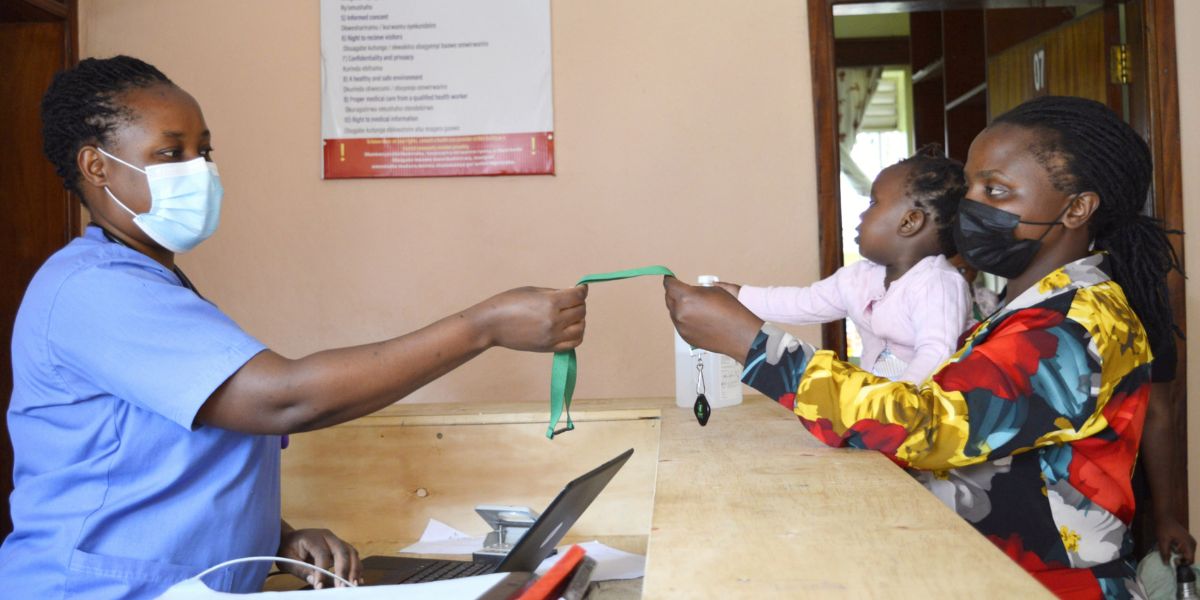Sepsis is a life-threatening condition that disproportionately affects children in low- and middle-income countries (LMICs). Delayed recognition and treatment, often due to inadequate triage systems, contribute to high death rates. The Institute for Global Health (IGH) at BC Children’s Hospital and BC Women’s Hospital + Health Centre is helping address these inequities impacting care. With collaborators in Uganda and Kenya, IGH evaluated Smart Triage — a digital platform that helps prioritize care for seriously ill children — in low-resource settings.
“Early treatment is key to improving patient outcomes and, with the use of Smart Triage, the time to intravenous antimicrobial administration (IVA) in Kenya decreased by 57 per cent,” says Charly Huxford, a co-author of the study that was recently published in PLOS Digital Health. The study was conducted to evaluate the impact of the digital platform on improving the speed and quality of care for children. Researchers also observed a reduction in hospital admissions in both countries: 47 per cent in Kenya and 33 per cent in Uganda.

In the past, validated data-driven electronic tools were unavailable to health-care workers, particularly in low-resource settings. The World Health Organization recommends that LMICs use the Emergency Triage, Assessment, and Treatment (ETAT) paper-based guidelines. “Despite being extensively rolled out, ETAT is used very poorly and not used at all in many facilities,” says Dr. Mark Ansermino, the lead author of the study and an investigator at BC Children’s Hospital Research Institute. “ETAT requires extensive training, memorization, and constant training updates.”
That’s the opposite of Smart Triage. Developed by IGH researchers, it’s easier to use and efficient in helping health-care workers quickly triage sick children to identify and prioritize the ones who are critically ill and need to receive timely, life-saving care.
The study was conducted in two phases: baseline and implementation. In the baseline phase, the research team collected data that reflected what was happening in the hospitals prior to the use of Smart Triage. In the implementation phase, pediatric patients were triaged through the digital platform. Two additional facilities served as control sites — places where, for comparison purposes, Smart Triage wasn’t implemented. Researchers compared the data obtained in both phases to evaluate the impact.
“With positive outcomes for children, the hospitals continued using our tool in their everyday clinical care,” says Huxford, who is also the coordinator of the Smart Triage program.
For the study, researchers analyzed data from more than 18,000 pediatric patients younger than 19 in two hospitals in Uganda and two in Kenya between 2020 and 2022. Each hospital participated in both the baseline and implementation phases. The research in Uganda started in April 2020, so it was impacted by the COVID-19 pandemic. Like many countries, Uganda faced lockdowns and shortage of staff, equipment, and supplies, as these resources were diverted to care for patients with COVID-19. Kenya was less affected by pandemic-related disruptions, and the implementation was able to start there in February 2021. “If the implementation of Smart Triage had happened at the same time, the difference in outcomes might not have been so large between countries,” says Huxford. Even so, the research provided important evidence that Smart Triage made an impact.
The IGH team primarily collected information about antibiotic treatment. Additionally, follow-up phone calls to patients once they had been discharged from the hospital revealed a decrease in late mortality by 75 per cent in Uganda and 25 per cent in Kenya. “Our study shows that Smart Triage isn’t just a random piece of technology,” says Dr. Ansermino, who is also the co-executive medical director at IGH and a professor in the Department of Anesthesiology, Pharmacology and Therapeutics at the University of British Columbia. “This tool can shorten hospital stays and save lives and resources without increasing risks to patients.”
Smart Triage consists of three components: a custom triage mobile app embedded with a risk-prediction model algorithm; a clinician dashboard; and Smart Spot, a Bluetooth system integrated with the other two components that tracks treatment and patient location. Once a child arrives at the hospital, their vital signs are logged into the app during triage to generate a score. This score determines their risk of being admitted so that care can be escalated accordingly. The risk falls in one of three categories: non-urgent, priority, or emergency. “If there’s any indication of an emergency, clinicians will prioritize this patient and provide them with the quickest care,” says Huxford.

When using Smart Spot, clinicians give triaged patients a colour-coded lanyard — red, yellow, or green — that visually indicates their priority level. A Bluetooth beacon is attached to the lanyard, and Bluetooth readers around the hospital pick up the signal from the beacon to show a patient’s location. By tapping the patient’s and the treatment room’s beacons together, physicians and nurses can record the treatment time. On the clinical dashboard, clinicians can see patients sorted by priority level, location, and waiting times.
The hospitals involved in the study continue to regularly use Smart Triage. IGH researchers are working with the Ministry of Health in Uganda to integrate it into their electronic medical record system. The findings will help the team expand the digital platform to more facilities and countries.
“A similar approach could be used to identify seriously ill children in BC, especially at hospitals in rural and remote areas without expert pediatric doctors,” says Dr. Ansermino.
The triage algorithm would need to be customized to match the types of diseases and social backgrounds seen in these areas. Approaches like Smart Triage help accelerate health improvement globally, creating an opportunity for Canada to address historical wrongs and achieve transformative impacts for everyone.
“We’ll now move towards confirming these findings in a larger study in different geographical settings,” says Dr. Ansermino. “We’ll provide industry partners with access to triage algorithms that can be included in health information systems and clinical monitoring devices, and work with the Ministry of Health in Uganda to implement it on a national scale and improve care for critically ill children.”




